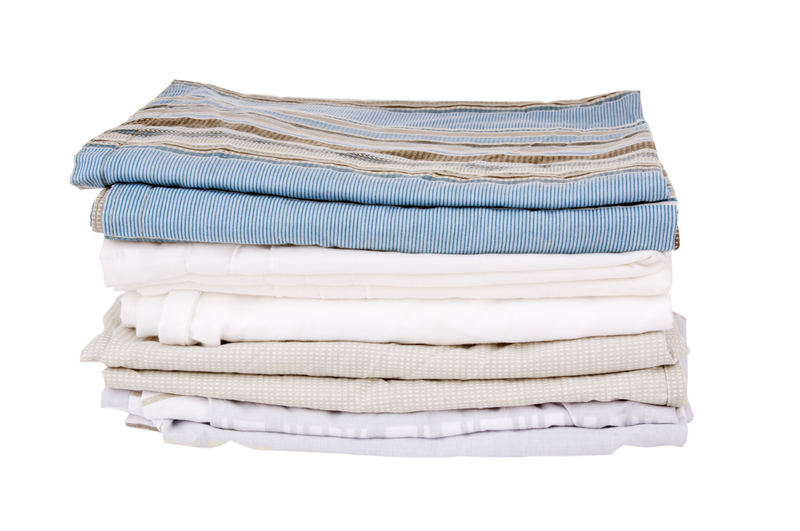Don't Toss PPE Anywhere: The Right Way to Dispose of It
The onset of global pandemics and heightened health concerns have propelled personal protective equipment (PPE) into our everyday lives. From face masks and gloves to face shields and gowns, PPE serves as an essential barrier against germs and hazardous substances. However, the sharp increase in PPE usage has led to a new and pressing challenge: proper disposal.
Disposing of PPE incorrectly can pose a severe threat to public health and the environment. In this comprehensive guide, we'll explain the right way to dispose of PPE, unravel the impact of PPE littering, and show responsible, eco-friendly, and community-conscious ways to manage your used masks, gloves, and other protective equipment.
Why Proper PPE Disposal Matters
Before understanding the correct disposal methods, it's crucial to grasp why it matters so much. When PPE is carelessly tossed on streets, in parks, or into regular recycling bins, it doesn't just look unsightly -- it presents significant hazards.
- Health Risks: Used PPE may be contaminated with viruses, bacteria, or chemical residues, making it a serious risk for sanitation workers, wildlife, and the general public.
- Environmental Damage: Most PPE, such as disposable masks and gloves, is made of plastics that don't decompose quickly, contributing to long-term pollution.
- Wildlife Threats: Animals can mistake PPE for food or become entangled, leading to injury, suffocation, or death.
- Sewage System Blockage: Flushed or improperly discarded PPE can clog pipes and municipal drains, causing flooding and extra costs for local governments.
The Growing PPE Waste Problem
According to the World Health Organization, the COVID-19 pandemic alone has triggered a massive surge in single-use PPE demand and waste. Every month, the world uses an estimated 129 billion face masks and 65 billion gloves. Unfortunately, a significant portion ends up in our landfills, streets, oceans, and natural reserves.

Types of PPE and Their Disposal Challenges
To dispose of PPE the right way, it's essential to recognize the various forms of PPE and why each type can be problematic.
- Disposable Masks (Surgical, N95, KN95): Made from multiple layers of polypropylene (a kind of plastic), they are non-biodegradable and can carry respiratory droplets.
- Gloves (Latex, Nitrile, Vinyl): Also largely plastic, these gloves are resistant to decomposition and can retain pathogens on their surface.
- Face Shields: Composed of plastic and foam components, these are bulky and not typically recyclable through household programs.
- Protective Gowns and Coveralls: Often made from plastic fibers, adding bulk to landfill waste.
Understanding these materials helps determine the most responsible route for PPE disposal.
Step-by-Step Guide: The Right Way to Dispose of PPE
Don't be tempted to throw your used PPE in standard recycling or compost bins! Proper and safe PPE disposal requires careful handling and awareness of local guidelines. Here's a step-by-step process:
1. Remove PPE Carefully
- When removing PPE, avoid touching the front or outside surfaces, which may be contaminated.
- Perform hand hygiene before and after removal through thorough washing or sanitizer use.
2. Do Not Litter or Flush
- Never throw masks and gloves on the ground or flush them down the toilet. This can pollute water systems and harm the environment.
3. Bag Your PPE
- Place used PPE in a dedicated garbage bag. Double-bagging is recommended for medical or potentially contaminated PPE to prevent leaks and contamination.
- Try to use a sealed, preferably opaque bag to keep the contents contained and away from contact.
4. Dispose in Designated Waste Bins
- Put bagged PPE directly into the general waste (landfill) bin -- not recycling. PPE can't be recycled with common household plastics due to contamination risks and materials.
- In public places, use bins labeled "PPE Waste" if available -- these are handled with extra safety measures.
5. Follow Local Guidelines
- Check your local municipality's specific instructions for PPE disposal, as requirements may differ. Some regions may offer dedicated PPE drop-off points, especially for higher-risk waste.
6. Wash Your Hands Afterwards
- After disposing of PPE, always wash your hands with soap and water to reduce any risk of infection.
Eco-Friendly & Responsible PPE Waste Management
Although most PPE is intended for single use and composed of non-recyclable plastics, there's still room for responsible and eco-friendly handling.
Reusable PPE Options
- Cloth Masks: Consider using washable masks made of multiple layers with a snug fit. These can be cleaned and reused, drastically reducing waste.
- Durable Face Shields: Choose face shields that can be washed and disinfected after each use, instead of disposable alternatives.
Reusable PPE not only minimizes your environmental impact but can also be more economical for repeated use over time.
PPE Recycling Initiatives
- Investigate local programs or mail-in recycling initiatives for masks and gloves. Companies like TerraCycle and local healthcare providers may offer special bins or boxes dedicated to separating and recycling PPE waste safely.
- Note that PPE recycling is not yet widely available for households, so these programs remain the exception rather than the norm.
Workplace and Community PPE Disposal
Safe PPE Disposal in Workplaces
- Employers are responsible for providing designated PPE disposal bins for workers and communicating correct procedures.
- Healthcare settings handle potentially infectious PPE in line with hazardous clinical waste protocols -- these should not be used or imitated at home.
- Provide clear signage, regular collection, and protective gear for cleaning staff managing PPE waste.
Community Initiatives for PPE Litter
- Local councils and environmental groups can organize cleanup campaigns targeted at PPE litter hotspots.
- Install more dedicated PPE bins at schools, transit stations, parks, and shopping centers.
Common PPE Disposal Mistakes to Avoid
- Throwing masks or gloves in the recycling bin: This contaminates recyclable materials for the entire collection batch and poses a health risk at recycling plants.
- Flushing PPE down toilets or sinks: This leads to sewage blockages and water pollution.
- Littering PPE in public places: Besides being illegal in some regions, this behavior endangers others and the environment.
- Burning PPE at home: Burning plastics can release toxic gases. Never burn PPE waste in household environments.
The Global Impact of Irresponsible PPE Disposal
The improper disposal of personal protective equipment has turned into a global environmental issue within just a few years.
- Marine Pollution: Oceans now face a surge in disposable masks and gloves, which can take centuries to degrade and may break down into microplastics, further impacting marine ecosystems.
- Landfill Overload: PPE contributes to already critical landfill overcapacity, especially in major cities.
- Harm to Wildlife: Birds, fish, and mammals can get entangled or ingest PPE, with fatal results.
- Resource Wastage: The production and careless discarding of disposable PPE squander valuable resources, including water and energy.
What You Can Do: Steps for Responsible PPE Usage and Disposal
- Plan ahead: Carry a small bag with you to store used masks or gloves when disposal bins aren't available.
- Switch to washable PPE when possible: Reduce your single-use waste footprint by opting for reusable options.
- Educate your community: Share disposal tips with friends, family, and coworkers.
- Get involved: Support or volunteer for local clean-up and education campaigns targeting PPE waste.

Key Takeaways: The Right Way to Dispose of PPE
Don't toss PPE anywhere! Whether at home, at work, or in public spaces, always dispose of masks, gloves, and other single-use PPE in a sealed garbage bag destined for the landfill, never in recycling or compost bins.
Remember:
- Bag and seal your used PPE before disposal.
- Use designated PPE bins in public or workplace settings whenever available.
- Switch to reusable PPE when it's safe and practical.
- Do not burn, flush, or litter PPE.
- Wash your hands after handling used PPE.
- Stay informed about local guidelines for hazardous or infectious waste if you care for someone sick at home.
- Be a role model for responsible PPE disposal in your community.
Conclusion
**Disposing of PPE the right way protects human health, saves wildlife, and safeguards our environment for future generations.** It's a small action with enormous consequences: put your used PPE in a sealed bag in the landfill bin, wash your hands, educate others, and support recycling where available.
For more on PPE waste, recycling programs, and how to be a green citizen, consider reaching out to your municipality's waste management department or local environmental groups. Together, every responsible action makes a difference--so don't toss PPE anywhere. Dispose of it the right way!
